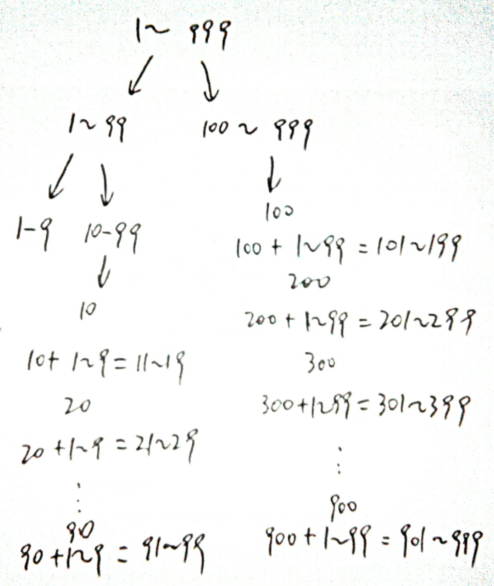题目
用递归的方法找到从1到最大的N位整数。
样例
给出 N = 1, 返回[1,2,3,4,5,6,7,8,9].
给出 N = 2, 返回[1,2,3,4,5,6,7,8,9,10,11,...,99].
注意
用下面这种方式去递归其实很容易:
recursion(i) {
if i > largest number:
return
results.add(i)
recursion(i + 1)
}
但是这种方式会耗费很多的递归空间,导致堆栈溢出。你能够用其他的方式来递归使得递归的深度最多只有 N 层么?
挑战
 Java Code
Java Code
 Python Code
Python Code
 Java Code
Java Code
用递归完成,而非循环的方式
解题
非递归最简单了,先求出最大的n位数N,然后顺序遍历求解

public class Solution { /** * @param n: An integer. * return : An array storing 1 to the largest number with n digits. */ public List<Integer> numbersByRecursion(int n) { // write your code here int N = 1; for(int i = 1;i<=n;i++){ N = N*10; } N = N - 1; List<Integer> result = new ArrayList<Integer>(); for(int i =1;i<= N ;i++){ result.add(i); } return result; } }
总耗时: 1629 ms

class Solution: # @param n: An integer. # return : A list of integer storing 1 to the largest number with n digits. def numbersByRecursion(self, n): # write your code here N = 1 for i in range(n): N *=10 result = [] for i in range(1,N): result.append(i) return result
总耗时: 674 ms
给的递归方式,运行到74%RunTime Error

public class Solution { /** * @param n: An integer. * return : An array storing 1 to the largest number with n digits. */ public List<Integer> numbersByRecursion(int n) { // write your code here int N = 1; for(int i = 1;i<=n;i++){ N = N*10; } N = N - 1; List<Integer> result = new ArrayList<Integer>(); getPrint(1,N,result); return result; } public void getPrint(int i,int N,List<Integer> result ){ if(i>N) return ; result.add(i); getPrint(i+1,N,result); } }
public int PrintN(int n,List<Integer> res){ if(n==0){ return 1; } int base = PrintN(n-1,res); int size = res.size(); for(int i = 1;i<= 9;i++){ int subbase = base*i; res.add(subbase); for(int j= 0;j< size ;j++){ res.add(subbase+res.get(j)); } } return base*10; }
上面是关键程序
在求 n-1位数到n位数的时候,先求n-2位数到n-1位数,就如同下面一样,这个很明显是找规律了。。。

